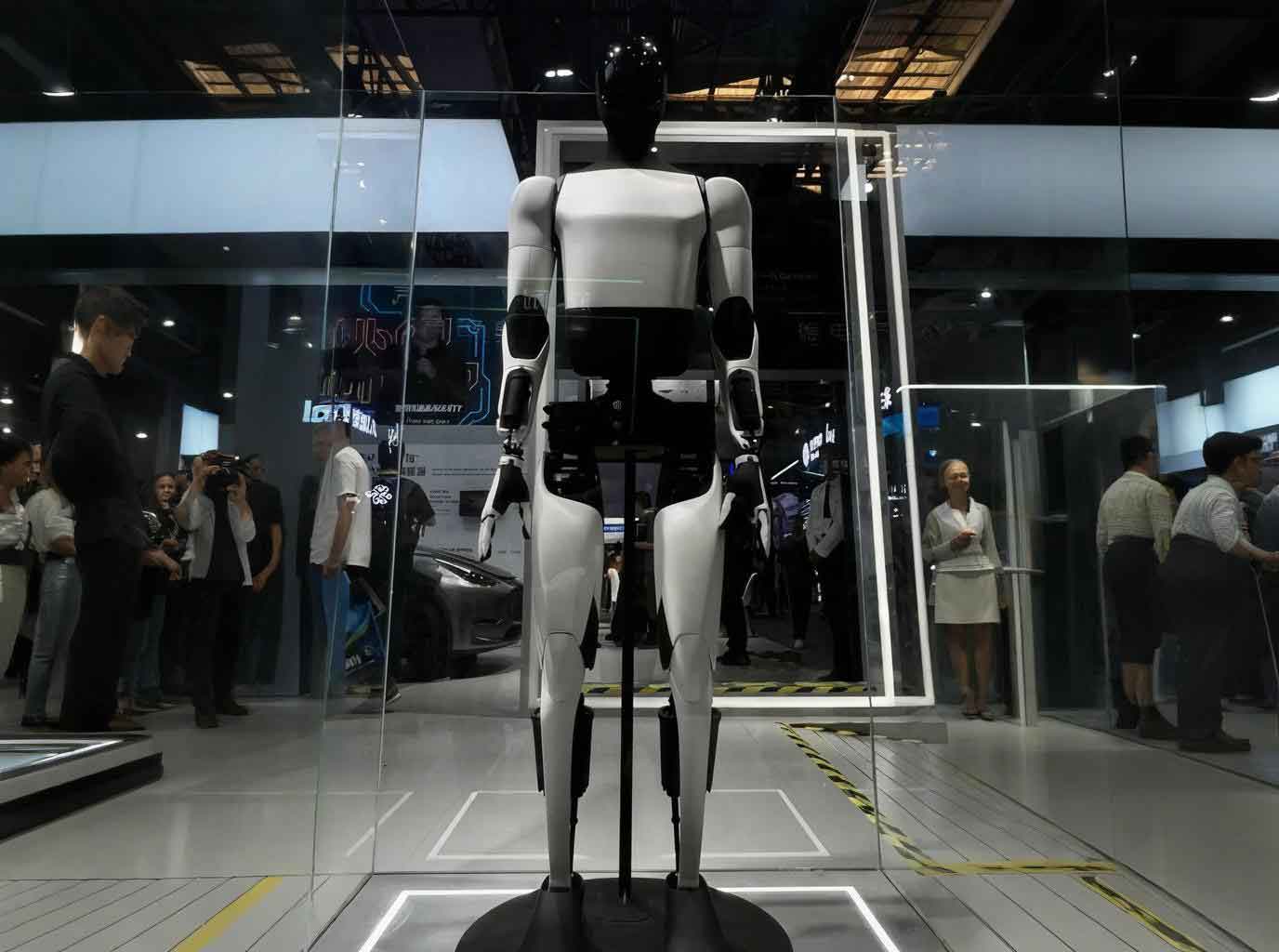The rhythmic hum of servo motors echoes through Dongguan’s factories, where assembly lines once dominated by human labor now pulse with a new generation of autonomous workers. Here, in China’s manufacturing heartland, embodied robots aren’t speculative tech—they’re stacking shelves, delivering components, and navigating complex warehouses with eerie precision. This city’s metamorphosis from “factory of the world” to a global embodied intelligence hub reveals how physical machines are rewriting industrial rules.

The Silent Revolution on Factory Floors
Walk into any advanced production facility in Dongguan, and you’ll witness embodied robots like the PUDU D9—a nimble logistics bot—transporting payloads across sprawling floors. These machines merge mobility, environmental awareness, and task execution, operating 24/7 without fatigue. One plant manager notes, “Our embodied robots reduced material handling errors by 21.7% last quarter. They learn from collisions, adapt to new layouts overnight, and communicate with older machinery.” Such gains are critical in a region where labor costs rose 9.27% year-over-year.
Supply chain resilience now hinges on these agile machines. When global disruptions struck in 2024, facilities leveraging embodied intelligence maintained 92% operational continuity versus 60% in traditional setups. “The embodied robot doesn’t just replace workers; it redefines workflow topology,” explains a systems architect at a leading automation firm.
Beyond Logistics: The Cognitive Leap
Dongguan’s ambition extends beyond manual displacement. Next-gen embodied robots integrate predictive analytics and swarm intelligence. In one electronics plant, a fleet of 200 coordinated embodied robots dynamically redistributes tasks during peak demand, boosting throughput by 30%. Another facility uses them for micro-welding—a role once deemed too delicate for automation—where sensors detect thermal variations at micron-level accuracy.
Healthcare and retail sectors now pilot these machines too. Hospital courier embodied robots navigate crowded corridors, delivering lab samples 50% faster. Retailers deploy them for overnight inventory audits, scanning 800+ items/hour with RFID precision. “An embodied robot isn’t a tool; it’s a teammate that perceives and acts,” remarks a robotics CEO.
The Engine of Acceleration: Policy Meets Ingenuity
Dongguan’s rise as an embodied intelligence nexus stems from ruthless pragmatism. City planners earmarked 40% of R&D tax incentives for embodied AI projects in 2023–2025. Meanwhile, startups collaborate with manufacturers on rapid prototyping—slashing development cycles from 24 months to under 7.
Talent pipelines fuel this momentum. Local universities now graduate 1,400+ specialists annually in embodied systems design. “We’re building embodied robots for Southeast Asian factories, European hospitals, and North American warehouses—all from Dongguan,” says an engineer at a homegrown firm.
The Roadblocks: Autonomy’s Growing Pains
Despite progress, challenges persist. Battery limitations cap operational endurance for mobile units. Multi-robot coordination remains computationally intensive—some systems still rely on centralized AI “orchestrators,” creating single points of failure. Safety protocols, too, lag behind innovation. When an embodied robot malfunctioned in a textile mill last year, it exposed gaps in real-time emergency override systems.
Ethical debates also simmer. As embodied robots assume 30% of low-skill roles, unions demand retraining investments. “The machine’s intelligence must include social responsibility,” argues a labor representative.
The Horizon: Embodied Intelligence as Ecosystem
Dongguan’s endgame transcends automation—it’s building symbiotic human-robot ecosystems. Hybrid teams now handle complex assembly: humans oversee strategy while embodied robots execute repetitive subtasks. Early adopters report 50% faster production with 12% lower defect rates.
Investors sense the inflection point. Venture capital flowing into Dongguan’s embodied intelligence sector grew 208% since 2022. Global manufacturers like Siemens and Toyota have established dedicated labs here, testing next-gen collaborative embodied robots.
Conclusion: The Physical Web of Intelligence
Dongguan’s factories offer a preview of a world where embodied robots are as ubiquitous as smartphones. They weld, lift, learn, and even predict maintenance failures before they occur. This city’s lesson is clear: the future of automation isn’t abstract algorithms—it’s machines that move, sense, and interact with flesh-and-blood precision. As one technician quips, “Our embodied robot doesn’t just work. It lives on the factory floor.”
In this relentless city, the age of disembodied AI is giving way to something more profound—a revolution with hands, wheels, and eyes. The embodied robot is here to stay, and it’s just learning to walk.